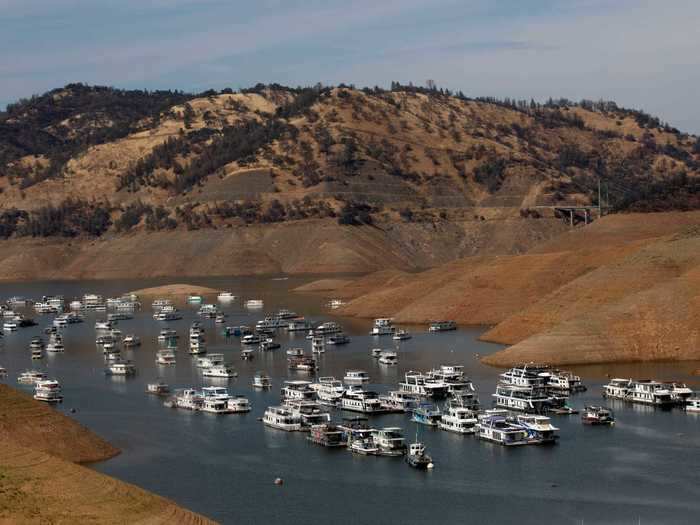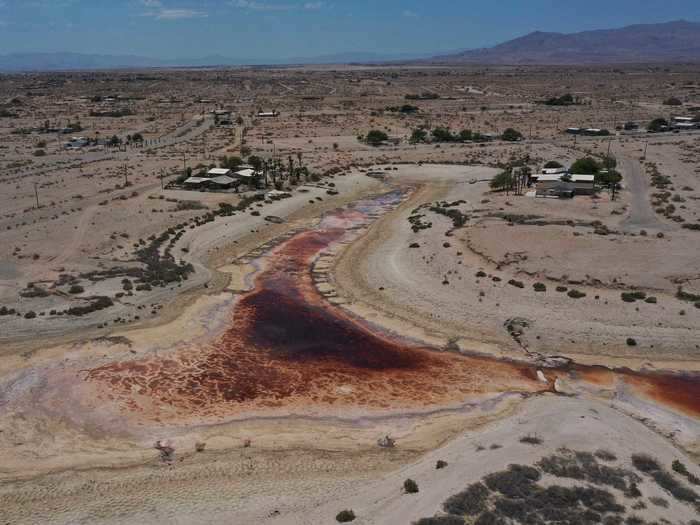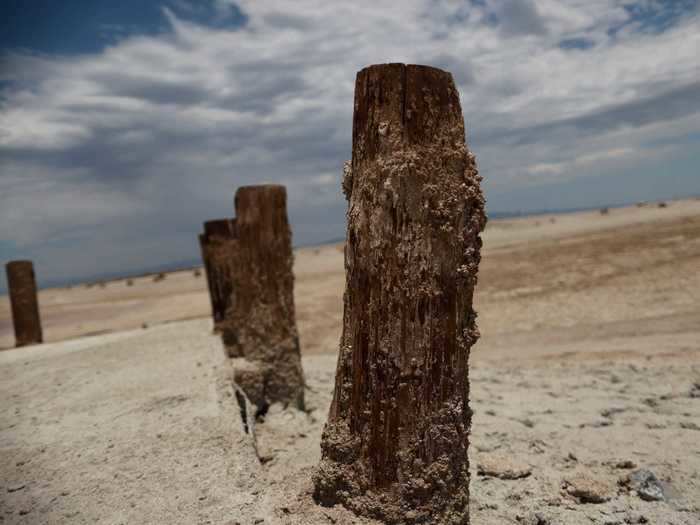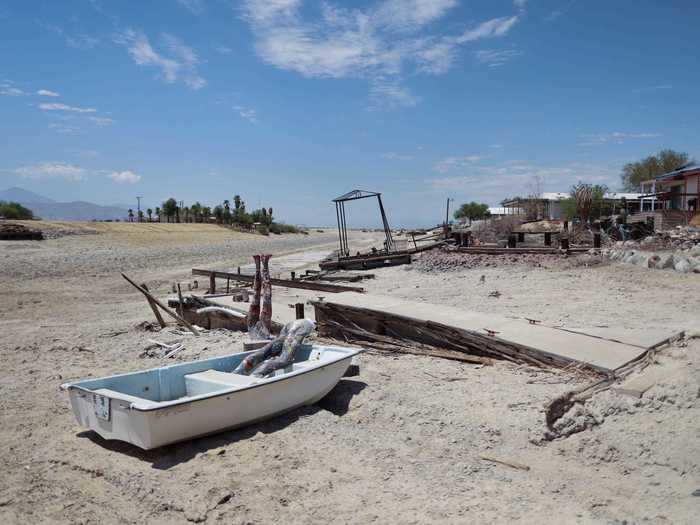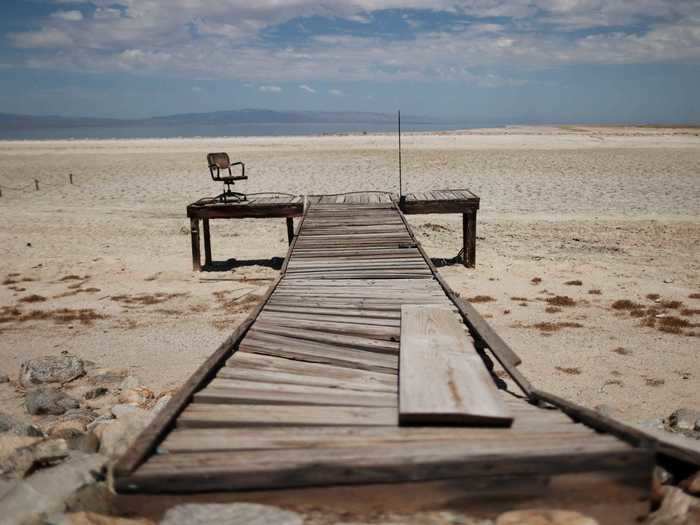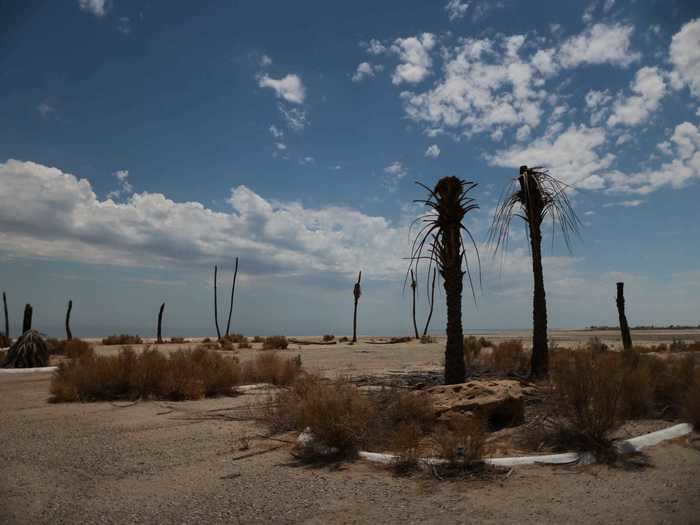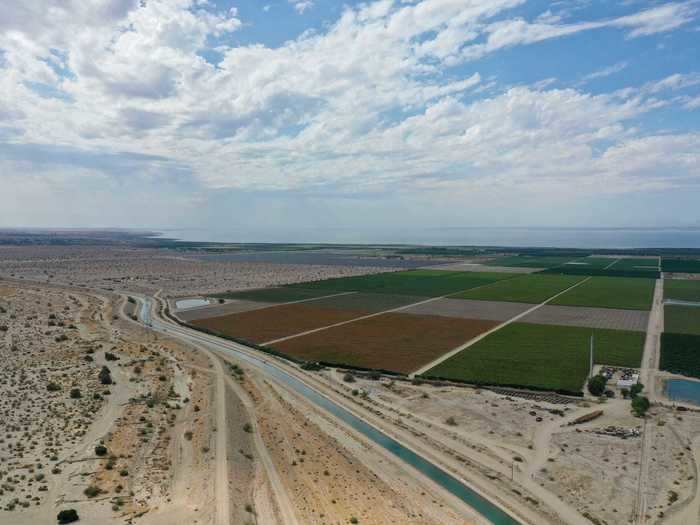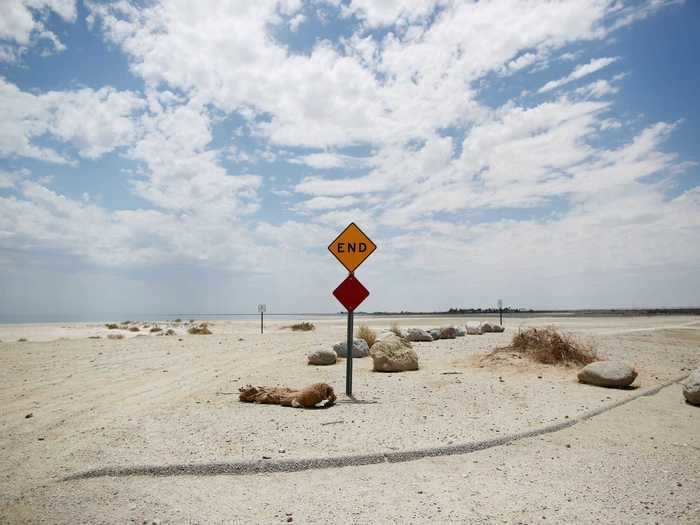An aerial view shows former docks on the beach at Salton Sea in California.Aude Guerrucci/Reuters
- An extreme drought in California is drying up lakes and reservoirs and straining electrical grids.
- Agriculture and tourism could be severely impacted, and wildfires are likely to rage this summer.
- Aerial photographs show how much the drought has already devastated California's landscape.
Boats sit on dry land. Once-lush palm trees are now brown and shriveled. And waterways that were formerly deep and flowing have been reduced to puddles of toxic residue.
This is the landscape in parts of California, which is experiencing a historic mega-drought that is expected to strain the state's electrical grid and dry up water supplies - water levels are 50% lower than normal at more than 1,500 reservoirs statewide, Jay Lund, codirector of the Center for Watershed Sciences at University of California, Davis, told Morning Brew. Given that 25% of the nation's food is grown in California, extreme droughts could decimate crops like avocados and almonds.
The drought has also made is harder for ranchers to supply water to their livestock, the state's boating industry is taking a hit, and tourism, which supports roughly 2 million jobs in California, could be severely impacted by the dangerous heat waves.
As of Friday, more than 85% of the state was classified as being in "extreme drought," according to the National Integrated Drought Information System, and experts say this is only the beginning: The dry conditions make California even more susceptible to deadly wildfires, which burned more than 4 million acres last year.
Read more: Meet the West Coast entrepreneurs founding startups to fight wildfires, combat the effects of climate change, and tap into a market potentially worth billions
"This current drought is potentially on track to become the worst that we've seen in at least 1,200 years. And the reason is linked directly to human-caused climate change," Kathleen Johnson, a paleoclimatologist at the University of California, Irvine, told The Guardian.
On Thursday, California Gov. Gavin Newsom asked residents to cut back on their water usage by 15% by taking shorter showers and running dishwashers and washing machines more sparingly.
Amid the devastating conditions, Reuters photographer Aude Guerrucci captured aerial photos of the impacts of the drought on California's landscape. Take a look:
Inside Shadow Lake Estates in Indio, California, an artificial lake glistens despite the scorched landscape surrounding it. Reservoirs and lakes are drying up statewide, with some turning completely to dust with no rain expected until later this year.
Aude Guerrucci/Reuters
Elsewhere, dropping water levels have forced houseboat owners to remove their vessels from the water. These boats are anchored in Laka Oroville, the second-largest reservoir in the state, which is at less than 40% of its normal capacity.
Aude Guerrucci/Reuters
This canal in Salton City, California, is almost completely evaporated, leaving being only toxic residue. Salmon that typically swim in rivers and canals like this one between California's Central Valley and the Pacific Ocean have had to be transported to the ocean via truck as those waterways become shallower and shallower.
Aude Guerrucci/Reuters
The dried up bodies of water are visible from space. Here, boat pillars that used to be submerged in the Salton Sea in Southern California are exposed by the receding water levels.
Aude Guerrucci/Reuters
Heat waves are sending temperatures into the triple digits. As another heat wave arrives, the Central Valley could see temperatures as high as 113 degrees Fahrenheit, while Southern California, where this boat became beached, could reach 117 degrees.
Aude Guerrucci/Reuters
These heat waves are occurring more often, starting earlier, and continuing later into the year now than they did in the 1960s, according to Environmental Protection Agency records. At the Salton Sea, docks sit on dry land, hundreds of feet from the water.
Aude Guerrucci/Reuters
The extra-dry, extra-hot conditions are obliterating vegetation like these palm trees, and taxing power grids. As temperatures rise, people tend to turn up air conditioning units, increasing the potential for rolling blackouts.
Aude Guerrucci/Reuters
In Mecca, California, in the Coachella Valley, agricultural fields reside amid a parched landscape. Agriculture is a roughly $50 billion business in California, and the severe drought could hamper the industry for years to come.
Aude Guerrucci/Reuters
The conditions mean this year's wildfire season could surpass the record-breaking devastation of 2020. "Much of the western United States will continue the trend of hot and dry weather, much like the summer of 2020," Brandon Buckingham, a meteorologist at AccuWeather, recently told Insider. "Each and every western heat wave throughout the summer will only heighten wildfire risks."
Aude Guerrucci/Reuters


